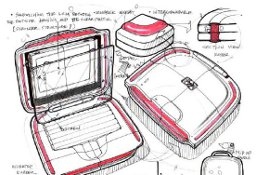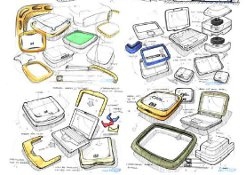|
|





Something starts with your idea or concept. It could be just an idea sketched out on a restaurant napkin or a full blown concept backed up with drawings and/or market research. |
The scope and specifications are then worked out between you and our engineers. When that is done, an amount of hours to complete the task is given to you along with a schedule for the work involved. |
We then begin with the electrical design process. This may involve research, prototyping circuitry, testing, and programming. |
Proof-of-Principle Prototype (model or breadboard). This type of prototype is used to test some aspect of the intended design without attempting to simulate the exact visual appearance, choice of materials, or intended manufacturing process. Such prototypes can be used to choose a potential design approach such as range of motion, mechanics, sensors, architecture, etc. These types of models are often used to identify which design options will not work, or where further development and testing is necessary. |
In general, it can be expected that individual prototype costs will be substantially greater than the final production costs. We work very carefully to control this and make sure the final design is taken into consideration at this point |
It is possible to use prototype testing to reduce the risk that a design may not perform acceptably, however prototypes generally cannot eliminate all risk. There are pragmatic and practical limitations to the ability of a prototype to match the intended final performance of the product and some allowances and engineering judgement are often required before moving forward with a production design. |
In electronics, prototyping means building an actual circuit to a theoretical design to verify that it works, and to provide a physical platform for debugging it if required. The prototype is often constructed using techniques such as wire wrap or using veroboard or breadboard that create an electrically correct circuit, but one that is not physically identical to the final product. |
The proliferation of quick-turn pcb fabrication companies and quick-turn PCB (printed circuit board) assembly houses has enabled the concepts of rapid prototyping to be applied to electronic circuit design. It is now possible, even with the smallest passive components and largest fine-pitch packages, to have boards fabricated and parts assembled in a matter of days. |
The process of creating the the actual PCB may be done more than once. Quite often an improvement can be made or a problem fixed within the first attempt after working with the actual circuit. |
The circuit board or boards may now be put into the enclosure or assembly. If the enclosure or assembly is done by us it will be a parallel process to the making of the PCB(s). |
After all the above is said and done, as required - a Bill of Materials, Production Drawings, Circuit Board Production Files and Software is all created or provided. |
